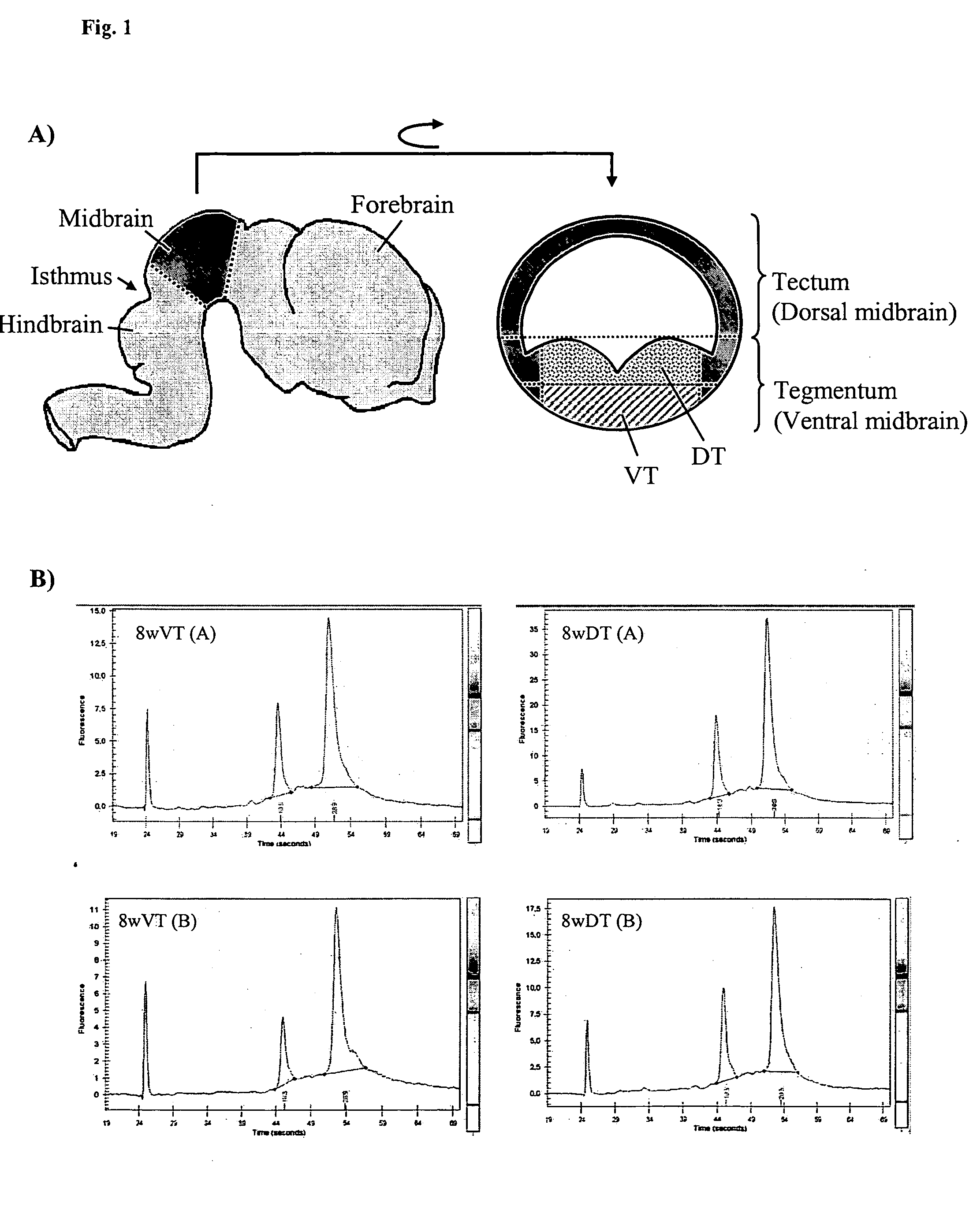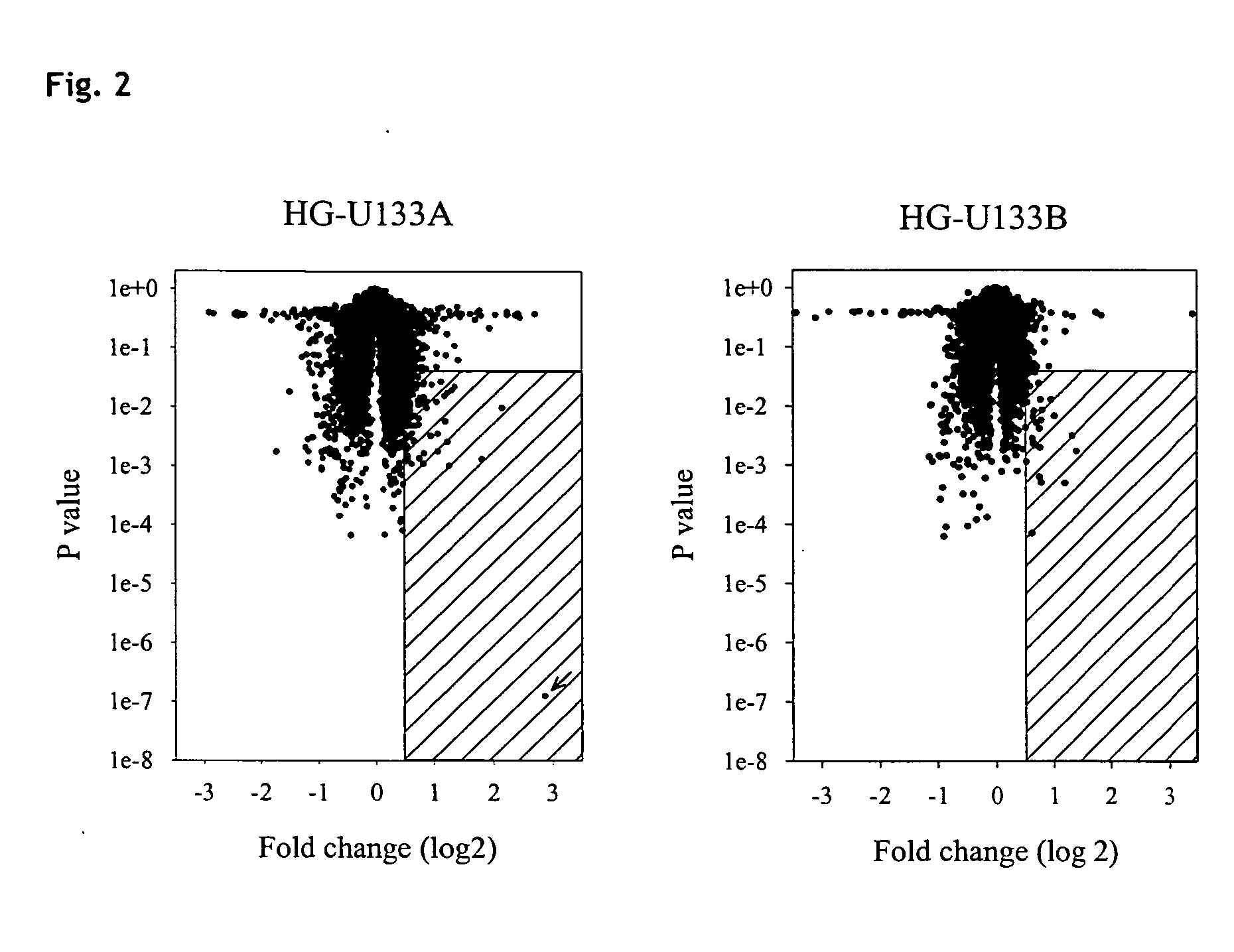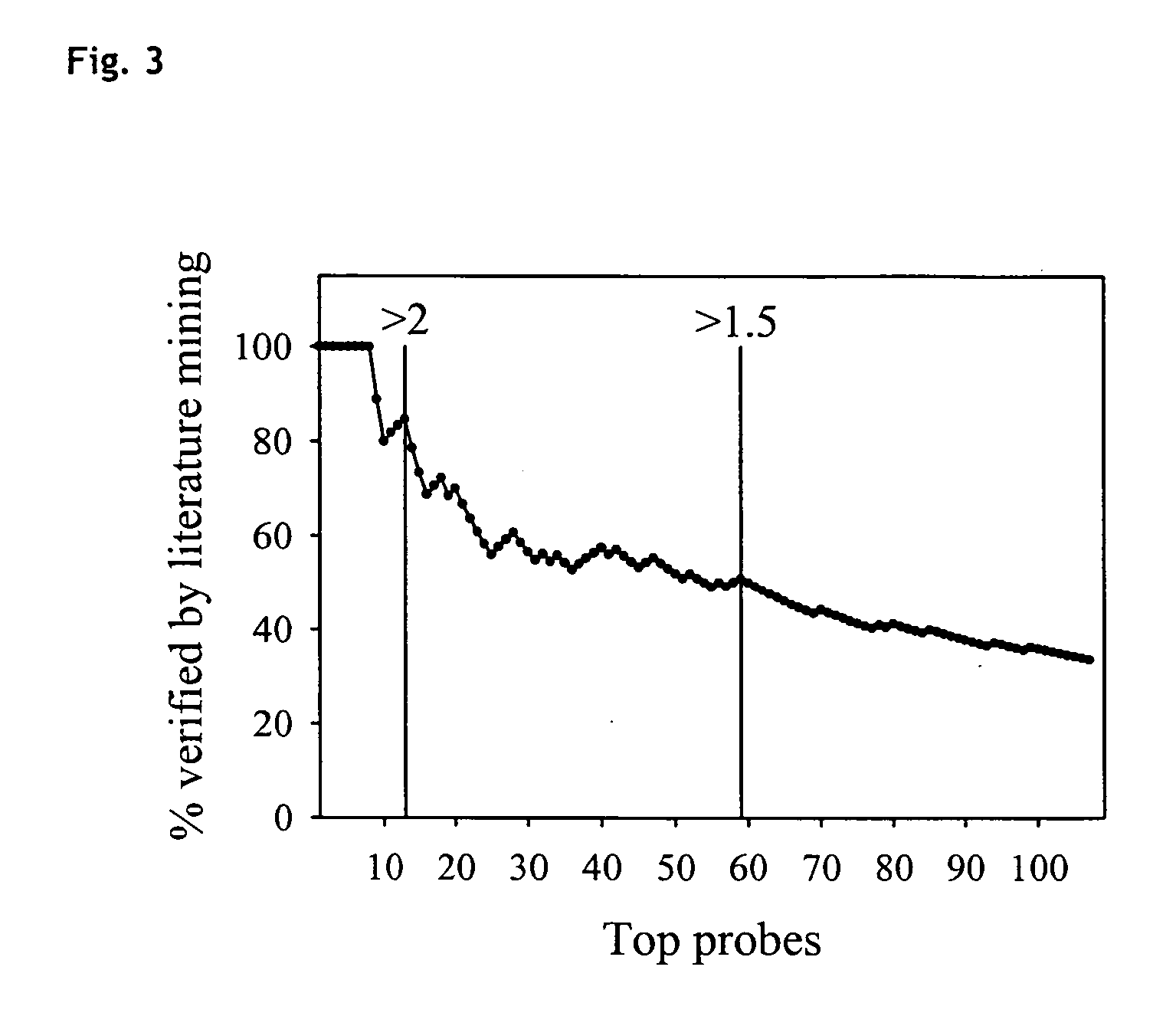Novel genes regulated in the developing human ventral mesencephalon
a ventral mesencephalon and gene technology, applied in the field of novel genes regulated in the developing human ventral mesencephalon, can solve the problems of no realistic large-scale treatment approach for the approximately 1% of the human population, and no disease modification or long-term effective treatmen
- Summary
- Abstract
- Description
- Claims
- Application Information
AI Technical Summary
Benefits of technology
Problems solved by technology
Method used
Image
Examples
example 1
Identification of Genes Regulated in the Developing Human Ventral Mesencephalon.
Materials and methods
Samples and RNA Extraction.
[0248] Embryonic tissue was recovered from first trimester routine abortions using standard vacuum aspiration techniques at the Karolinska University Hospital, Huddinge, Sweden. The collection was approved by the Human Ethics Committee of the Huddinge University Hospital, Karolinska Institute, and is in accordance with the guidelines of the Swedish National Board of Health and Welfare (Socialstyrelsen). The GA of each specimen was determined by size and anatomy according to the atlas of England (England, 1988). A total of 14 human embryonic and fetal brain tissue samples, 5 to 10w GA, were used for this study. Cases were rapidly sub dissected into fore- and midbrain. For cases older than 7w GA, midbrain samples were further sub dissected into ventral- and dorsal tegmentum (VT and DT) as illustrated in FIG. 1. After dissection, tissues were instantly f...
example 2
Growth Factors with Midbrain Expression.
Introduction
[0275] Factors of importance for DA development do not necessarily have to be differentially expressed between ventral and dorsal tegmentum. In a clinical perspective, secreted factors, especially growth factors, are most interesting as they open up the possibility of protein based treatment strategies. We would like to identify both known and potential growth factors with robust expression in the 8w GA midbrain.
Methods
[0276] Human sequence data was downloaded from publicly available databases. Nucleotide sequences were downloaded from Unigene (Unigene ver. 186, ftp: / / ftp.ncbi.nih.gov / repository / UniGene / Homo_sapiens / Hs.seq.uniq.gz) and Affymetrix (http: / / www.Affymetrix.com / support / technical / byproduct.affx?product=hgu133) whereas protein sequences were downloaded from International Protein Index (IPI) database (IPI Ver. 3.09, ftp: / / ftp.ebi.ac.uk / pub / databases / IPI / current / ipi.HUMAN.fasta.gz). Also, Gene Ontology categories wer...
PUM
| Property | Measurement | Unit |
|---|---|---|
| Temperature | aaaaa | aaaaa |
| Temperature | aaaaa | aaaaa |
| Temperature | aaaaa | aaaaa |
Abstract
Description
Claims
Application Information
 Login to View More
Login to View More - R&D
- Intellectual Property
- Life Sciences
- Materials
- Tech Scout
- Unparalleled Data Quality
- Higher Quality Content
- 60% Fewer Hallucinations
Browse by: Latest US Patents, China's latest patents, Technical Efficacy Thesaurus, Application Domain, Technology Topic, Popular Technical Reports.
© 2025 PatSnap. All rights reserved.Legal|Privacy policy|Modern Slavery Act Transparency Statement|Sitemap|About US| Contact US: help@patsnap.com



